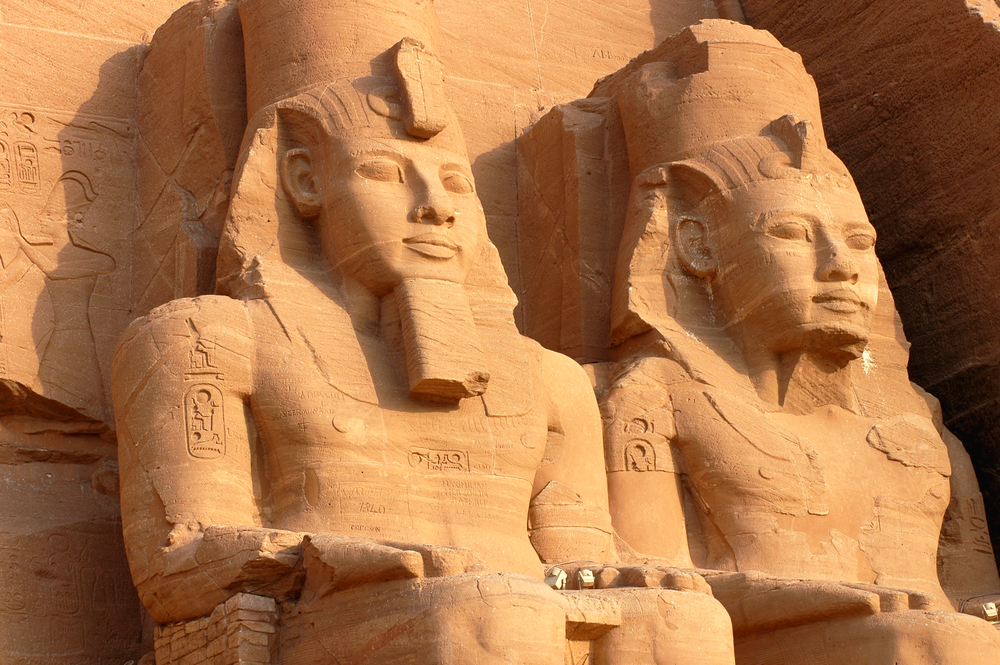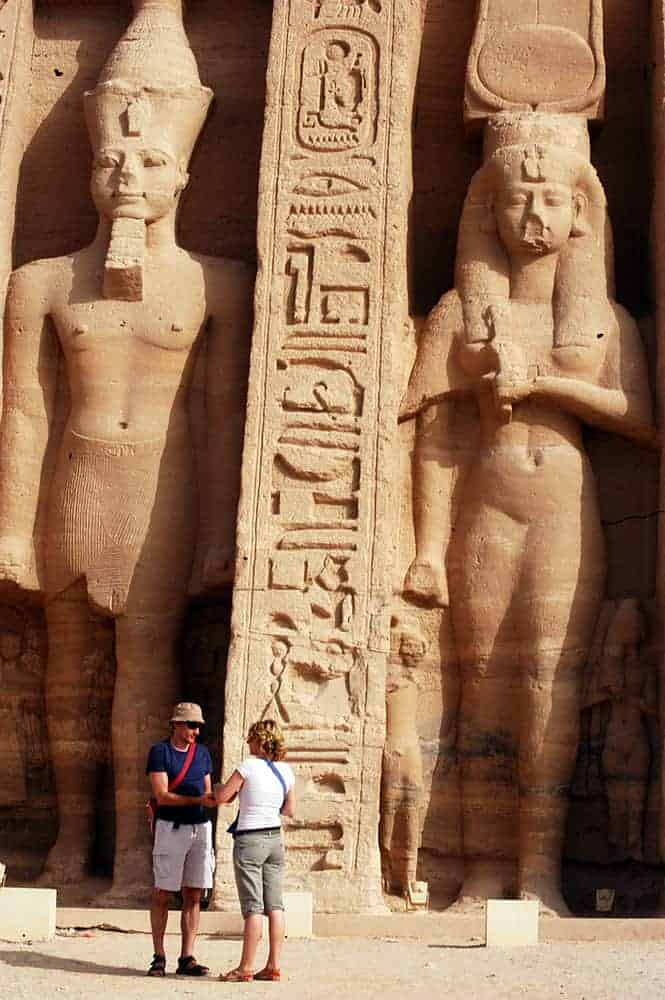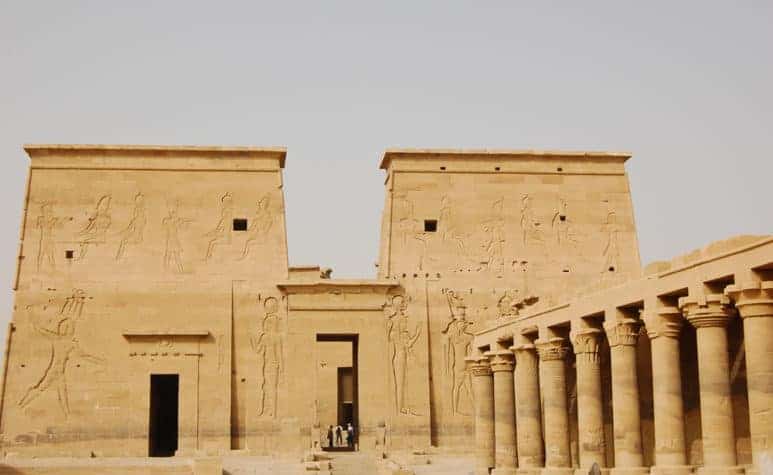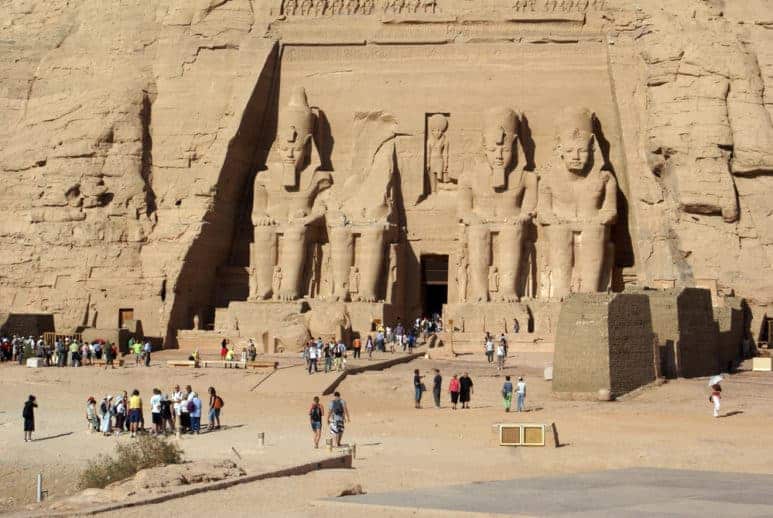A Temple Fit For a King
Of all the magnificent monuments and awe-inspiring temples on your Egypt vacation, the great Sun Temple at Abu Simbel, south of Aswan is perhaps the most unique. Commissioned by King Ramses II between 1290 and 1224 BC, in what must be one of the greatest demonstrations of narcissism in history, the gargantuan rock-cut temple was built as a show of Ramses’ political power and his divine rights as pharaoh. As one of ancient Egypt’s most powerful rulers, it was, and still is, a monument fit for a king and is a highlight of our Egypt custom tours.

And it is the king himself who still guards the entrance to the beautiful structure. Carved directly into the side of a mountain are four colossal statues of Ramses, powerful yet majestically poised and more than enough to deter any modern-day treasure hunters.
The Sun Festival of King Ramses
But what sets Ramses’ temple apart from other ancient monuments is the architectural precision of its design. Due to the brilliance of Ramses and his architects, the entire temple was positioned so that, twice every year, the sun’s rays would align to illuminate the inner sanctum of the temple.
As the sun rises above the horizon, a single shaft of light penetrates through the temple doors and beyond and beams laser-straight through the interior hypostyle hall into the inner sanctuary to light up the gods of the living world, while Ptah, the god of the underworld, remains in shadows.
It is a truly spectacular phenomenon, and the event is now celebrated with the Abu Simbel Sun Festival, which takes place on the date of Ramses’ ascension to the throne, February 22nd, and also on his birthday, on October 22nd.
Remember that scene from Raiders of the Lost Arc, where Indiana Jones places the staff in the beam of light? The inspiration for that scene was clearly found at Abu Simbel.

Awesome Engineering, Both Old and New
After the construction of the Aswan High Dam, well worth a visit itself, and because of the risk of destruction from the rising waters of the Nile and Lake Nasser, in 1972 the temple was re-located to nearby higher ground. It was a remarkable feat of modern engineering, and meant that the temple would stand for all eternity, just as Ramses demanded. It does mean that the sun now strikes a day later than Ramses planned, but it does not diminish the beauty of what is another of Egypt’s spellbinding and legendary monuments you’ll experience on your Egypt tour. King Ramses II also built Luxor temple in the city of Luxor, parts in Karnak temple, and he also built the Ramesseum temple in the West bank of Luxor. The tomb of King Rameses II in the Valley of the Kings is one of the best tombs as well as his wife’s tomb in the Valley of the Queens.
Philae On The Nile
But the remarkable temples of Abu Simbel aren’t the only attraction in the area. On a small island in the middle of the Nile River sits one of ancient Nubia’s most important monument sites, the Temples of Philae. The temples were an ancient pilgrimage destination for followers of the cult of Isis, and have been venerated by travelers on their own Egypt travel packages for millennia. With its spectacular colonnades and intricate craved friezes, and with a backdrop of the gently flowing Nile all around, Philae is simply stunning.

Much like the temples at Abu Simbel, Philae temple was also at risk from the rising water levels, but thanks to UNESCO‘s fantastic rescue project, they coordinated to move the temple from Philae Island to its modern home on nearby Agilika Island, block by massive block. Even the great King Ramses himself would be impressed.
Check out our luxury Egypt tours and our best Egypt tour packages and contact us for a free quote today!
